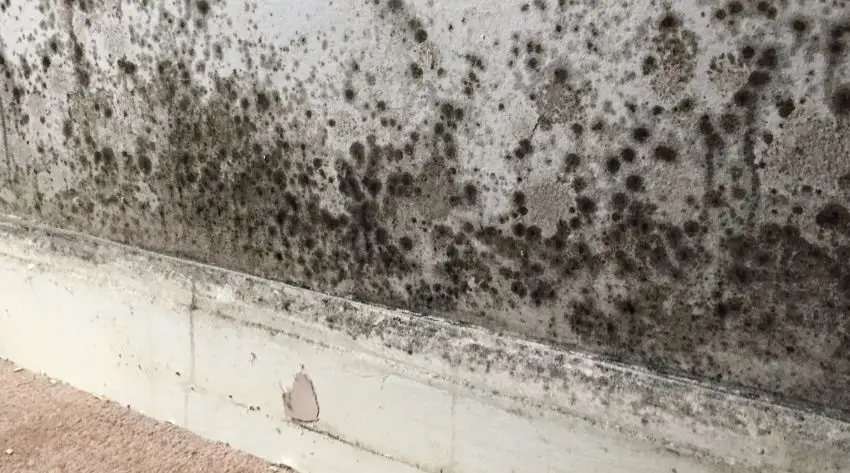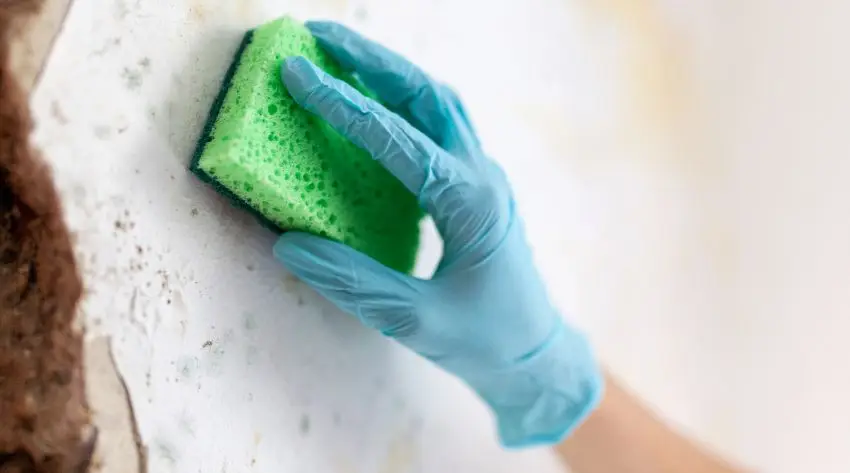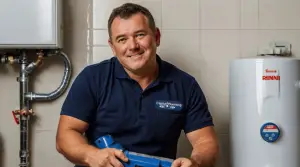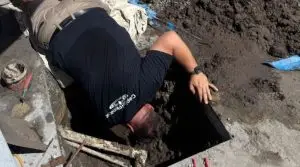Let’s be real—no one wants to deal with mould. It’s gross, it smells, and it can mess with your health. On the Gold Coast in Australia our service area, most residents blame poor airflow or sticky summer humidity when mould shows up, but there’s another big culprit that often flies under the radar: plumbing problems.
Yep, leaky pipes, dodgy drainage, or a sneaky drip under the sink can quietly create the perfect storm for mould to take over your home.
So, what’s the deal? Let’s break down how your plumbing could be feeding a mould problem, what it means for your health, and how to nip mould in the bud by addressing plumbing issues.
Why Plumbing Problems Make Mould Go Wild

Mould doesn’t need much to start a party—just a bit of moisture, some warmth, and something to grow on (like your timber framing, gyprock, or dust). Your home already has the last two covered, so when water starts showing up from a leak or a blocked drain, mould spores get everything they need to go wild.
Here’s how plumbing issues usually kick things off:
1. Leaky Pipes
Pipes hidden behind walls or under the floor are outta sight, so a slow leak can do damage for weeks before you even know it’s there. Water gets into the timber, insulation, or drywall, and next thing you know—mould city.
2. Dripping Taps or Fixtures
It might not seem like a big deal, but a constant drip around a sink or laundry tap adds up. That moisture hangs around, and mould loves it.
3. Blocked Drains
When water backs up in your shower or sink, it can soak into surrounding surfaces. The longer it stays wet, the higher the mould risk.
4. Toilet Leaks
Especially around the toilet base—these ones can be sneaky. Water seeps into the floor and you don’t notice until mould (or the smell) gives it away.
5. Hot Water System Leaks
These are often tucked away in a cupboard or garage, quietly leaking warm water—prime conditions for mould to thrive.
6. Dodgy Waterproofing
Bathrooms, kitchens, and laundries all need proper waterproofing. If it’s not done right or if plumbing isn’t sealed properly, water can get into your walls and floors before you know it.
Why Mould Is More Than Just a Pain in the Neck
Mould isn’t just ugly or smelly—it can seriously mess with your health, especially if you’ve got asthma, allergies, or a weak immune system.
You might notice:
- Constant coughing or sneezing
- Sinus issues or blocked nose
- Skin irritation or rashes
- Red, itchy eyes
- Fatigue or headaches
- Breathing troubles
Kids, older folks, and anyone with existing health conditions can feel it the worst. If symptoms ease up when you’re out of the house, your home might be the problem.
Signs Your Home Might Be Hiding a Leak (and Mould)
Not sure if your plumbing’s causing problems? Keep an eye out for:
A musty or damp smell
Water stains or weird patches on walls and ceilings
Peeling paint or bubbling wallpaper
Squishy floors or warped timber
High water bills for no reason
Foggy windows or condensation that won’t go away
Spot any of those? Time to call in the pros before it gets worse.
Why Getting a Plumber In Is a Smart Move
Plumbing issues often start where you can’t see them. That’s why regular inspections by a licensed plumber can save you stacks in repairs (and stress).
A proper plumbing check can:
Sniff out hidden leaks with clever tech
Test your water pressure and pipe health
Check drains for blockages
Inspect your hot water system
Make sure everything’s sealed up and up to standard
It’s way cheaper and easier to deal with small problems now than a mould invasion later.
Already Got Mould? Here’s What to Do
If you reckon there’s already mould in your place, don’t muck around:
1. Fix the Source First
Sort out the plumbing issue straight away—otherwise, the mould will just come back.
2. Dry Things Out
Use fans, open windows, or grab a dehumidifier to dry out the area.
3. Clean It Properly
For small spots, vinegar or a mould cleaner might do the trick. Big jobs? Call a pro. Don’t take risks with your health.
4. Keep an Eye On It
Even after cleaning, keep checking the spot. If mould or dampness reappears, something’s still not right.
Why Mould Is More Than Just a Pain in the Bank
Mould isn’t just ugly or smelly—it can seriously mess with your health, especially if you’ve got asthma, allergies, or a weak immune system.
You might notice:
- Constant coughing or sneezing
- Sinus issues or blocked nose
- Skin irritation or rashes
- Red, itchy eyes
- Fatigue or headaches
- Breathing troubles
Kids, older folks, and anyone with existing health conditions can feel it the worst. If symptoms ease up when you’re out of the house, your home might be the problem.
Signs Your Home Might Be Hiding a Leak (and Mould)
Not sure if your plumbing’s causing problems? Keep an eye out for:
- A musty or damp smell
- Water stains or weird patches on walls and ceilings
- Peeling paint or bubbling wallpaper
- Squishy floors or warped timber
- High water bills for no reason
- Foggy windows or condensation that won’t go away
Spot any of those? Time to call in the pros before it gets worse.
Why Getting a Plumber in is a Smart Move
Plumbing issues often start where you can’t see them. That’s why regular inspections by a licensed plumber can save you stacks in repairs (and stress).
A proper plumbing check can:
- Sniff out hidden leaks with clever tech
- Test your water pressure and pipe health
- Check drains for blockages
- Inspect your hot water system
- Make sure everything’s sealed up and up to standard
It’s way cheaper and easier to deal with small problems now than a mould invasion later.
Already Got Mould? Here’s What to Do
If you think there’s already mould in your place, don’t muck around:
1. Fix the Source First
Sort out the plumbing issue straight away—otherwise, the mould will just come back.
2. Dry Things Out
Use fans, open windows, or grab a dehumidifier to dry out the area.
3. Clean It Properly
For small spots, vinegar or a mould cleaner might do the trick. Big jobs? Call a pro. Don’t take risks with your health.
4. Keep an Eye On It
Even after cleaning, keep checking the spot. If mould or dampness reappears, something’s still not right.
How to Keep Mould Out for Good

Here are a few simple tips to stop plumbing and mould problems before they start:
- Get a plumber to inspect things once a year
- Use exhaust fans in bathrooms and kitchens
- Clean your gutters and downpipes regularly
- Don’t let garden beds sit too close to your house
- Use a dehumidifier if you’ve got a damp-prone area
- Jump on leaks as soon as they pop up
Where to next.....
Plumbing problems and mould go hand-in-hand more often than most Australian’s realise. A tiny drip today could mean a huge mould problem down the track—not to mention health headaches and expensive repairs.
So if you’ve noticed signs of mould, a leak, or just haven’t had your plumbing checked in a while, now’s a great time to sort it. Call in a licensed plumber and give your home a once-over. It’s always better to be safe than sorry—and a dry home is a happy home.




